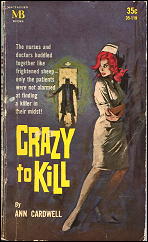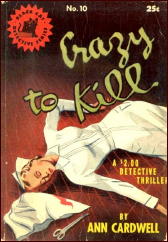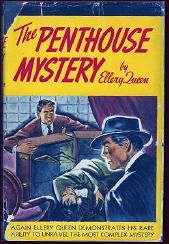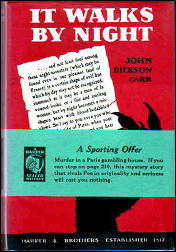Fri 6 Jul 2012
by Josef Hoffman
In my view, the vast majority of cover illustrations for present-day crime novels are boring or even ugly, and that includes all subgenres. Worst of all are the uninspired photographic covers with images of a pistol or a knife, a house or a street, one or more people, especially if these have nothing whatsoever to do with the plot of the crime story.
There is not much point in pining for times past, when covers were still drawn or painted and suggested significant scenes of the crime story. It would seem to be the wrong approach to simply imitate the style of the cover illustrations of the 1950s, for example; and this is also wrong even if the old crime novels are reissued.
For instance, I hesitate to buy the recently published book containing the collected stories of the Black Mask author Paul Cain (The Complete Slayers), as I feel put off by the much-praised illustration by Ron Lesser on the cover. It shows a scantily clothed, sexy young woman with a cigarette and a gun, with which she appears to have just killed a man.

My distaste for this cover illustration has nothing to do with “political correctness†or even prudery, but rather with historical consciousness. I would have preferred it if original cover illustrations from old Black Mask editions had been used for the cover of the book, for example as parts of a collage.
It’s not as if I do not also enjoy so-called “GGA†(Good Girl Art), but only when it originates from the same period as the publication of the books. Back then it was something new, a daring venture that only just escaped the censors. Nowadays one is practically bombarded with pictures of more or less naked people everywhere. Relying on sexploitation to create cover art is dull and annoying.
Taking a historical view, I can even appreciate such an extreme and infamous, frequently reproduced cover image as Rudolph Belarski’s The Doll’s Trunk Murder by Helen Reilly (Popular Library, # 211) from 1949. It is so bizarre and surreal that even any misogynist tendencies that might exist are neutralised aesthetically.

The picture shows a pretty young woman tied to a chair. Her mouth is sealed with adhesive tape. Her blouse is open, revealing much of one breast. A male hand holding a knife approaches the woman. The observer cannot tell whether the intended use of the knife is to abuse the woman, to kill her, or to cut through her fetters. The picture has a thrilling, explosive effect.
Such an image would have quite a different impact on me if it were painted and published now, in 2012. As mentioned, I am not talking about “political correctness†here, which is sensibly applied to political speeches, news and similar statements, but which has no place in artistic products, even if they are merely lurid entertainment.
What I mean is a contemporary taste. A relatively good solution to the problem was found by Black Lizard Books in designing the newly reissued, old noir crime novels. The cover illustrations by Kirwan capture the sinister atmosphere of these crime stories without imitating the original covers, as is sadly the case with some of the covers in the Hard Case Crime series.
Here is a link to Kirwan’s covers he did for Black Lizard. I do not like them all equally, as I find some of them too surreal, but most of them are well done. One I think is very good is the one he did for Black Friday, by David Goodis. The atmosphere is so hopeless and the colours are so cold that the picture suits the story.

A complete collection of the Hard Case Crime covers may be found here. An example of one I consider bad is the picture of Lawrence Block’s 69 Barrow Street. It is rather unimaginative to put just a nude in the middle of the cover, not exciting at all.

Much better is the cover art of No House Limit by Steve Fisher. These big dice in front of the picture symbolize chance in life and are significant for the novel.

Perhaps the publishers’ art directors should look around at some comic artists in order to find new visual forms of expression that might suit crime novels. Admittedly, it costs more to pay these artists for their work (which should also require that they read the crime novel in question) than it would to simply use a more or less suitable picture from a photo archive, or to plunder one from the masterpieces of art history.
It involves more effort and expense to create a new picture than to select one that already exists. By the way, it is only acceptable to use a painting by Caravaggio on the cover of a crime novel that is published now if the story deals with the robbery of such a painting, or is set during Caravaggio’s time.
It might well be that I have suffered a surfeit of crime novel cover art and am therefore hypercritical. I know of no ideal solution. Perhaps some other crime lovers have better suggestions.























